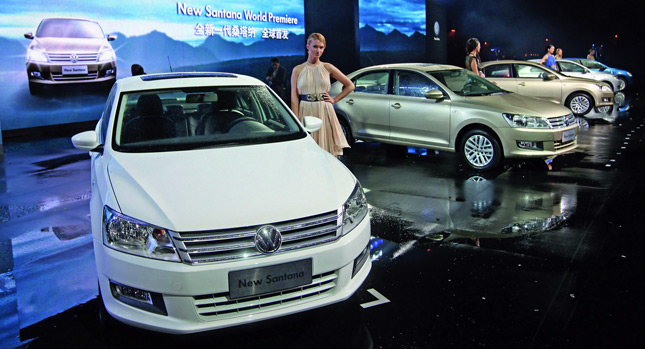In most markets, the lifespan of a new model is about six to eight years – give or take, with a facelift scheduled somewhere in the middle. China, on the other hand, is not your usual car market; or at least it wasn’t for quite a long time.
That’s why the Volkswagen Santana, which was based on the second generation of the Passat, code-named B2, and was launched in the Chinese market in 1982, soldiered on for three decades!
During that period, it sold nearly four million units, which made it one of the most popular cars in the country.
Now, however, the time has come for it to be replaced– and it’s not a moment too soon as the competition in the world’s biggest car market is stiffening up.
The all-new Santana, which will be built in China at Shanghai Volkswagen Automotive, made its world debut on Monday night at VW’s Wolfsburg plant in Germany where the first generation was developed.
Its boxy bodywork may not win any awards but it incorporates some of the brand’s design elements such as the simple front end with the characteristic grille.
More importantly, the Santana’s 2,603 mm-long wheelbase offers much more knee space for rear passengers and a more spacious 480-liter boot.
In addition, it sports a modern interior and safety and comfort features such as front, side and head airbags, electronic stability control, air conditioning or climate control, leather upholstery, an electric sunroof, parking sensors and alloy wheels.
These will be on the standard or optional equipment list, depending on the trim level. In China, the Santana will be offered in three version labeled Trendline, Comfortline and Highline and with a choice of two petrol engines.
Both of them are based on the new EA 211 16-valve aluminum four-cylinder series. The base 1.4-liter has an output of 88 HP (90 PS) and an average fuel consumption of 5.9 lt/100 km (39.9 mpg US), while the 1.6-liter produces 108 HP (110 PS) and is 28 percent more frugal than its predecessor, consuming 6.0 lt/100 km (39.2 mpg US).
By Andrew Tsaousis
PHOTO GALLERY












